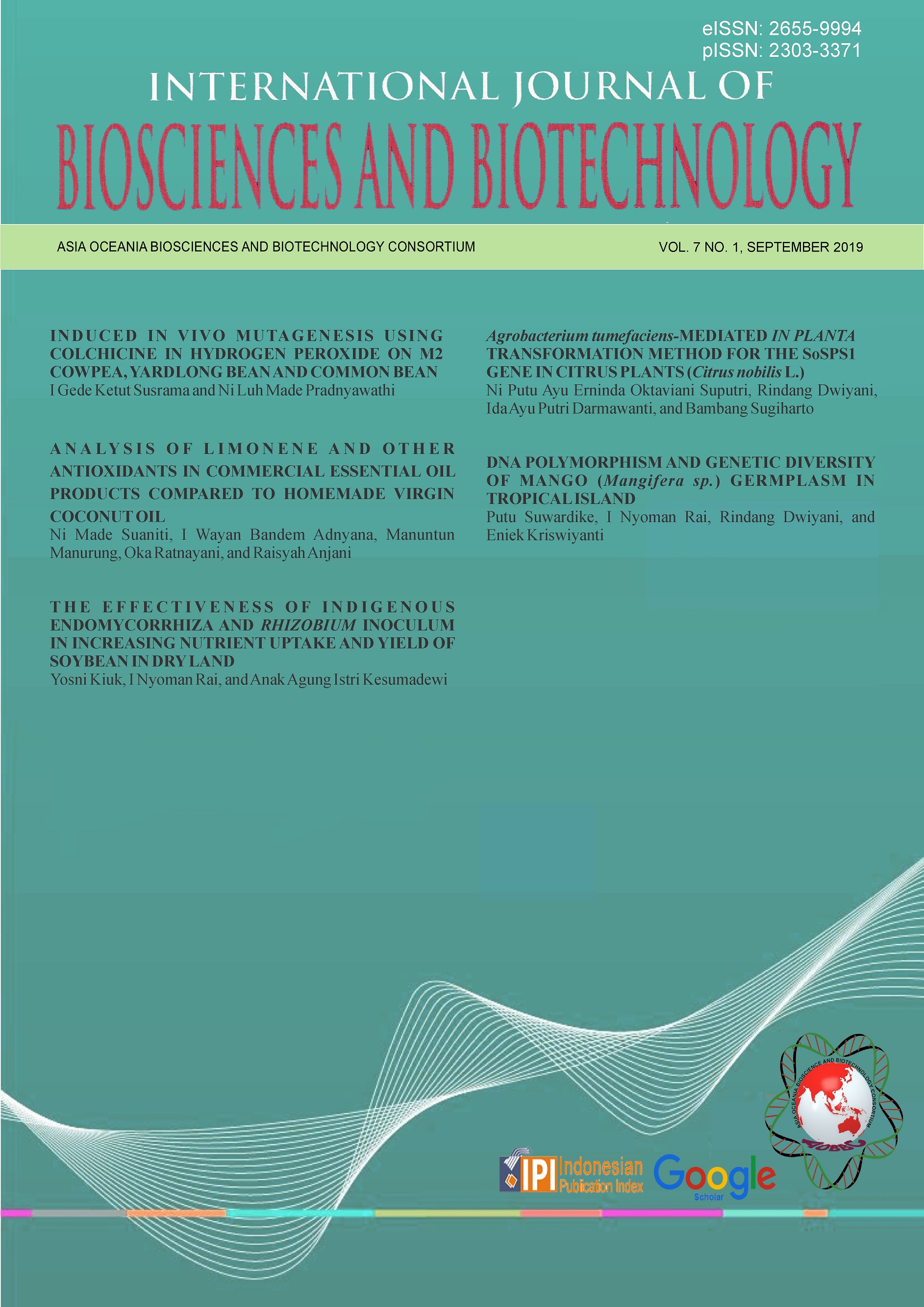DNA POLYMORPHISM AND GENETIC DIVERSITY OF MANGO (Mangifera sp.) GERMPLASM IN TROPICAL ISLAND
Abstract
Creation of new superior varieties of mango through the empowerment of local genetic resources requires information about the potential properties of mango germplasm, including DNA polymorphism and its genetic diversity. This research aimed to obtain basic data on DNA polymorphism, genetic relationship, genetic similarity level, and molecular accession of Bali’s unique local mango. Sampling was conducted in four regencies in the Province of Bali. DNA preparation, PCR, and microsatellite analysis were carried out at the Laboratory of Genetics and Plant Breeding, Faculty of Agriculture, Gadjah Mada University. It found 44
accessions of mangoes in Bali. The test results with 10 pairs of SSR markers showed that all primers produced polymorphic loci. There were 825 amplified DNA bands. Primer of AY31 produced the highest number of loci, which were 14 loci, while AY21 produced the fewest loci, i.e., 3 loci. Forty-four mango accessions showed a genetic similarity coefficient of 0.27 to 0.97. At a coefficient of 0.27, accessions were divided into 2 major groups: group A and group B. Group A consisted of two accessions, namely, KRA-005 and BDG-006 (Mangifera foetida Lour.), which had a similar coefficient of 0.657. Group B was divided into two
smaller groups, namely, groups B1 and B2, at a similarity coefficient of 0.342. Group B1 consisted of 39 accessions, while group B2 consisted of 3 accessions. Accessions Madu Anggur, Gading, Sambuk Mengwi, Kakul and Pakel Sulangai were identified as having unique alleles.






